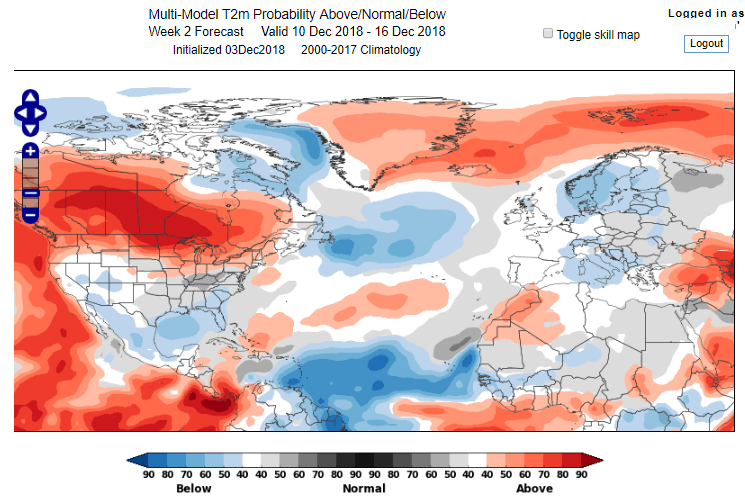Introduction to Seasonal and Subseasonal Probabilistic Forecasts
The probabilistic climate forecast is emerging as an important tool for weather-sensitive companies and organizations to gain value from long-range forecasts. The World Climate Service seasonal and subseasonal (S2S) climate forecasts emphasize probabilistic information, which is less intuitive but more powerful than the traditional style of deterministic short-term weather forecasts. It is impossible to provide forecasts of specific daily weather events more than 10 to 14 days into the future. Probability forecasts, however, empower quantitative decision systems, because they allow the user to calculate the financial consequences of action or inaction based on the forecasts. In this way, World Climate Service forecasts enable users to make precisely correct decisions in the face of uncertainty and thereby to take control of weather risk.
Probability Forecasts
The world is full of uncertainty about future outcomes, ranging from unexpected storms to accidents, elections, or unruly financial markets. Modeling this uncertainty through the use of probabilities and statistical inference provides the key to making better and more useful predictions, leading to more successful decisions. The World Climate Service relies heavily on a probability framework to convey sub-seasonal to seasonal (S2S) forecast information in the form of a probabilistic climate forecast.
A significant challenge associated with probability forecasts is that first-time users often encounter difficulty in interpreting and using the forecast information. The difficulty arises because probability forecasts represent a fundamentally different kind of information from the short-range weather forecasts that are common in modern society. Traditional short-range weather forecasts are generally “deterministic”, meaning that the forecast shows a specific outcome (e.g. temperature or wind speed) for each day or hour.[1] However, probability forecasts appear to show a wide range of possibilities and it is often not immediately clear how to use this type of information.

The rationale for presenting S2S guidance as probability forecasts is two-fold:
- Outcomes beyond about seven days in the future are inherently very uncertain, and therefore it does not make sense to show specific outcomes that are almost certain not to occur. In other words, the average error associated with deterministic forecasts is very large at longer lead times.
- More importantly, probability information can be used to calculate expected financial outcomes based on decisions made in response to the forecasts. Probability forecasts therefore translate directly into expected profit and loss, which is a primary concern for many enterprises.
The goal of this paper is to explain the main elements of probability forecasting and to highlight the power of probability forecasts for decision-making. Section 2 describes the conceptual framework for probability forecasts and the forecast performance metric used by the World Climate Service, and Section 3 outlines the mechanism for calculating financial outcomes.
The full discussion can be downloaded at: https://s2s.worldclimateservice.com/docfiles/WCS_Introduction_To_Probability_Forecasts.pdf
[1] An exception to this rule is that short-range precipitation forecasts usually show a “chance” or probability of precipitation because it is widely understood that forecasters often cannot say with confidence whether or not rain or snow will occur in a specific day or hour.